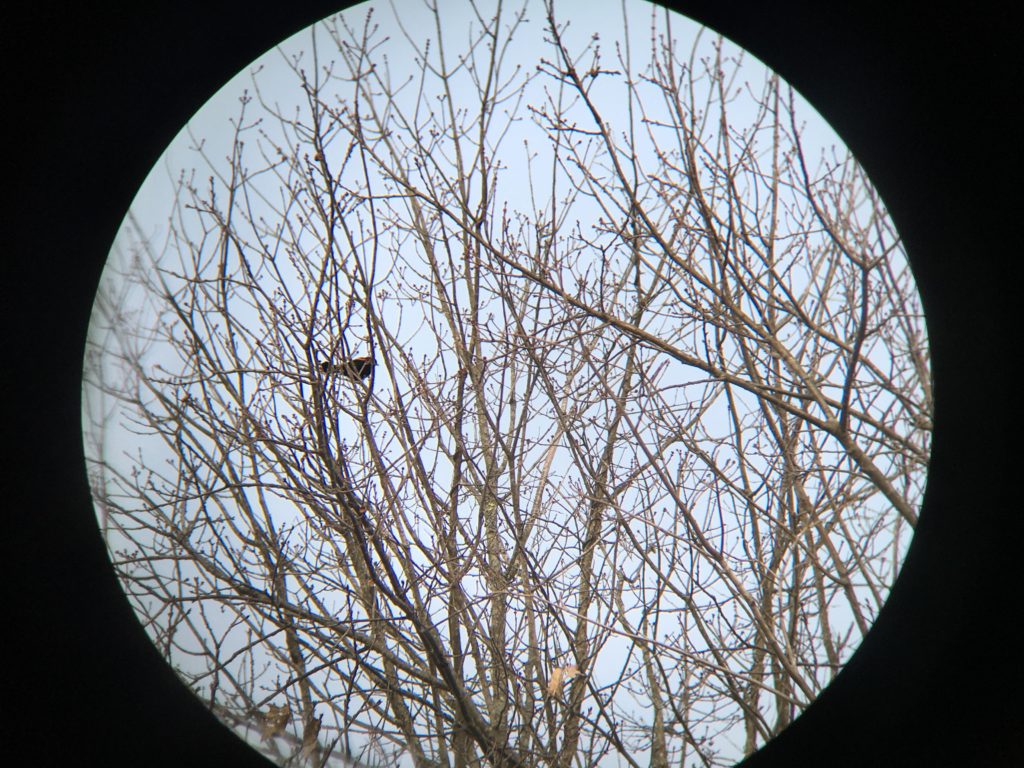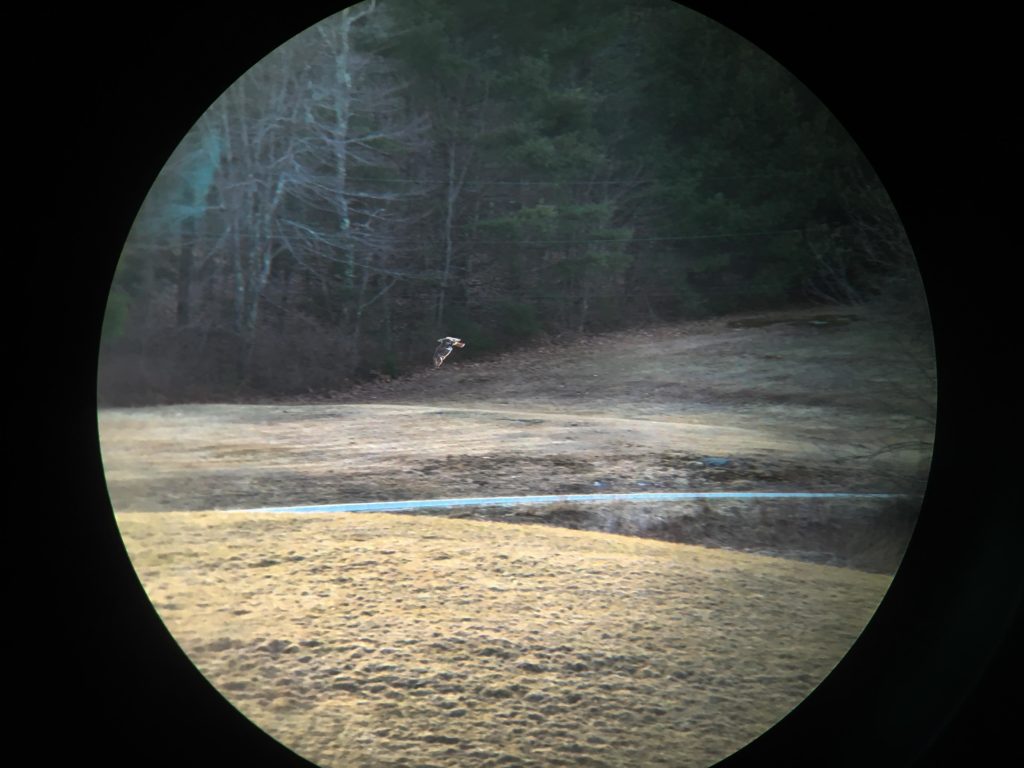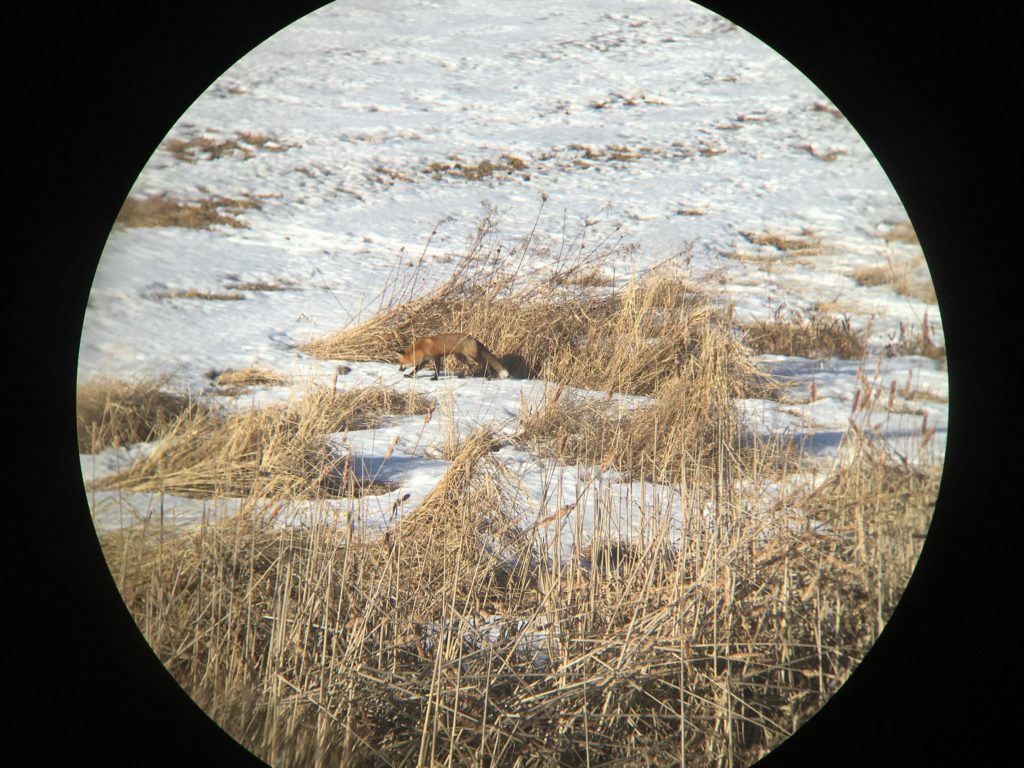Under normal circumstances, I would be spending the end of March placing a last-second Fedco order, researching the lineups for concerts at Thompson’s Point, and adding every Red Sox and Sea Dogs game to my Google calendar. While this year has been a little bit different, seed order notwithstanding, I’ve been left with more time to explore new interests, including one which has taken hold: birding.
My journey began in earnest a bit over a week ago, when I stepped into my driveway and was immediately greeted by the antagonistic caws of a Red-winged Blackbird. The species is, along with the Robin, one of the first to return in spring, and is easily identified by either its call or characteristic splotches of bright red as it flies by. Over the following couple days, I started noticing other species as they appeared in my “office” window. My list soon included Blue Jays, Black-Capped Chickadees, and a large flock of European Starlings.
My roommate (or should I say colleague?), Miranda, alerted me to the fact that a pair of regular old field binoculars can make a decent zoom lens, even for a basic phone camera. Before long, we had captured a Red-tailed Hawk, one of the Red-winged Blackbirds, and even our neighborhood fox.



Sunday morning, I spotted a pair of woodpeckers hopping from tree to tree in the front yard. I wasn’t able to get a good picture, but still wanted to make an identification. I hastily summoned three of my go-to resources:
- Merlin Bird ID, an app from the Cornell Lab of Ornithology that makes it easy to go from 0 experience to a handful of ID’s in no time
- Our kitchen table copy of Birds of Maine by Stan Tekiela, a conveniently-sized, geographically-focused, low-tech alternative
- The Audubon website, which has a huge list of species-specific advice from the experts
In this case, I eventually determined that due to size (closer to a robin than a sparrow) and length of beak (about as long as the head), it was a Hairy Woodpecker, as opposed to the similarly-colored but smaller Downy Woodpecker.
By this point, I was clearly hooked. Before long, I had printed out a checklist of birds to spot in Maine, bookmarked the live map that uses weather radar to detect bulk movement of migratory birds, and resolved to learn how to use eBird properly so that I can start contributing to citizen science initiatives.
While I know I am but the most recent addition to a community of bird enthusiasts in Cape Elizabeth, I am excited to continue learning more. Have any tips you’d like to share? Send them my way at philip@capelandtrust.org.
—By Philip Mathieu, CELT Education Coordinator
